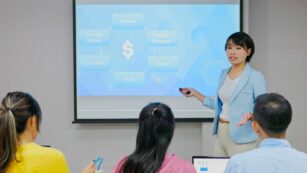The impact of technology on education has revolutionized the way students learn, educators teach, and how educational content is delivered and consumed. From smart classrooms to online courses, technology’s integration into the educational sector has opened up new avenues for learning that were once unimaginable. This transformation is not just reshaping the educational landscape but also how knowledge is accessed, making education more accessible and inclusive than ever before.
Impact Of Technology On Education
The impact of technology on education extends beyond just enhancing learning experiences. It reshapes the educational landscape, ensuring greater accessibility and inclusivity. By integrating digital tools, education becomes more interactive and personalized, meeting the diverse needs of students. It prepares them for a future dominated by digital advancements. This transformative effect underscores the importance of understanding how technology influences educational outcomes and lays the groundwork for future learning innovations.
Educational Technology in Today’s Classroom
 In today’s classrooms, educational technology plays a pivotal role, enhancing both teaching and learning processes. Digital tools and resources facilitate an interactive learning environment, enabling personalization that meets individual student needs. This approach not only supports diverse learning styles but also prepares students for a future where digital proficiency is essential. The integration of technology in education, therefore, marks a significant stride toward achieving inclusive and accessible learning experiences, aligning with the evolving educational landscape.
In today’s classrooms, educational technology plays a pivotal role, enhancing both teaching and learning processes. Digital tools and resources facilitate an interactive learning environment, enabling personalization that meets individual student needs. This approach not only supports diverse learning styles but also prepares students for a future where digital proficiency is essential. The integration of technology in education, therefore, marks a significant stride toward achieving inclusive and accessible learning experiences, aligning with the evolving educational landscape.
E-Learning and Online Education Platforms
Building on the transformative impact of technology on education, e-learning and online education platforms have further expanded the horizons of digital learning. These platforms provide an array of resources and tools that cater to different learning styles and pace, making education more accessible and flexible than ever before. They serve as a testament to how technology has evolved to meet the changing needs of learners, facilitating a seamless connection between educators and students across the globe. Through these online channels, learners can access courses, tutorials, and educational content anytime, anywhere, breaking down geographical and time barriers. This shift towards e-learning underscores the dynamic role of technology in education, ensuring that learning opportunities are available to anyone with an internet connection.
The Role of Artificial Intelligence in Personalized Learning
 Following the impact of technology on education, Artificial Intelligence (AI) stands out in its capacity to revolutionize how students engage with educational content. AI’s role is crucial in developing personalized learning paths that adjust to the unique needs, skills, and pace of each student. This adaptability ensures that learners receive instruction and resources most suited to their learning styles and objectives.
Following the impact of technology on education, Artificial Intelligence (AI) stands out in its capacity to revolutionize how students engage with educational content. AI’s role is crucial in developing personalized learning paths that adjust to the unique needs, skills, and pace of each student. This adaptability ensures that learners receive instruction and resources most suited to their learning styles and objectives.
AI systems collect and analyze data on student performance, identifying strengths and weaknesses. They then adapt the curriculum in real-time, providing targeted exercises and feedback to help students improve in areas where they struggle. This process ensures a tailored learning experience, promoting efficiency and engagement.
Moreover, AI contributes to the accessibility of education. Language processing tools and voice recognition features make learning materials more accessible to students with various learning disabilities and those who are non-native English speakers.
Challenges and Considerations
 Navigating the impact of technology on education involves addressing several challenges and considerations to ensure a balanced integration. Key issues include equitable access to technology, the balance between traditional teaching methods and digital tools, privacy and data security concerns, and the potential for increased screen time to affect physical and mental health.
Navigating the impact of technology on education involves addressing several challenges and considerations to ensure a balanced integration. Key issues include equitable access to technology, the balance between traditional teaching methods and digital tools, privacy and data security concerns, and the potential for increased screen time to affect physical and mental health.
- Equitable Access: Not all students have the same access to devices and the internet, leading to a digital divide. Schools and educators must find ways to ensure that every student benefits from educational technology, regardless of their socio-economic background.
- Balancing Educational Tools: Integrating technology with traditional teaching methodologies requires careful planning. Teachers need to combine digital tools with conventional teaching practices effectively, ensuring that technology complements rather than replaces human interactions and hands-on learning experiences.
- Privacy and Data Security: As more student data becomes digitized, protecting this information from breaches becomes paramount. Educational institutions must adopt robust data protection measures to safeguard sensitive information against unauthorized access.
- Screen Time Concerns: With the rise of e-learning, concerns about the health impacts of prolonged screen time have emerged. Educators must design technology-enhanced learning experiences that encourage physical movement and real-world interactions to mitigate these risks.

